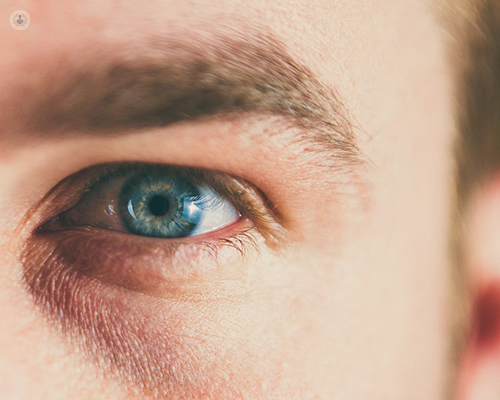What is laser trabeculoplasty, and might I require it?
Autore:Top Doctors recently had the pleasure of speaking with award-winning, Southampton-based consultant ophthalmologist, Mr Francisco Stringa, who, here, in our latest article, provides us with a comprehensive explanation of what laser trabeculoplasty is, when it might be required, and what the most common side effects of the surgery typically are.

What is laser trabeculoplasty?
Selective Laser Trabeculoplasty (SLT) is a type of laser eye surgery which is used to reduce the intraocular pressure in people with glaucoma or ocular hypertension. SLT works by making the cells in the trabecular meshwork (the drainage system of the eye) pump fluid out of the eye more efficiently. The trabecular meshwork is located inside the front part of our eyeball, where the white part joins the coloured part.
Why might someone require laser trabeculoplasty?
It is typically performed when eye drop medications are not lowering the eye pressure enough or are causing side effects. It can also be used as initial treatment in glaucoma or in people that cannot cope with or do not want glaucoma eye drops.
Is laser trabeculoplasty painful?
It is usually not painful. Most patients do not experience any significant discomfort, although some may feel a little pressure inside the eye or a slight headache during or after the SLT procedure. Many people say that the whole experience is very similar to having a normal eye check-up in the clinic.
What is involved in the laser trabeculoplasty procedure? How long does it take to recover?
The SLT procedure typically takes between three and five minutes for each eye. A special contact lens is applied during the laser, in order to keep the eyelids open, and anaesthetic eye drops are applied to ensure that your eye is comfortable with the lens on your eye. The laser machine looks very similar to the microscope used during a normal examination (the slit lamp).
No aftercare or precautions are needed following the surgery, and people are generally free to return to their normal activities from the following day onwards. The vision may be a little blurry for a few hours or indeed days afterwards, and the eye may be slightly achy and slightly sensitive to light. If these symptoms are worrying, or if they are getting worse, it is advised to contact your ophthalmologist for a further check-up.
The lowering pressure effect is not instantaneous. It will take up to three to five weeks for the eye pressure to reduce after the laser, which is when an eye check-up is recommended. If anti-glaucoma eye drops are used before SLT, these should be continued until the first check-up after the laser.
What are the possible side effects of laser trabeculoplasty?
SLT is a safe procedure, and the risk of adverse effects is minimal. There is a small risk of increased eye pressure for a short period of time after the laser treatment. To prevent this, additional eye drops before and/or after the procedure might be required. Eye discomfort, redness, blurry vision, and/or sensitivity to light might be experienced too.
There have been very few reports of serious problems after SLT. The reported cases were bleeding of the iris, swelling of the retina (back of the eye) and swelling or distortion of the cornea (front transparent window of the eye). Most peoples’ eyes settle down without any further problems, and it is extremely rare for the SLT laser to cause permanent worsening of vision.
To schedule an appointment with Mr Francesco Stringa, simply visit his Top Doctors profile today.


